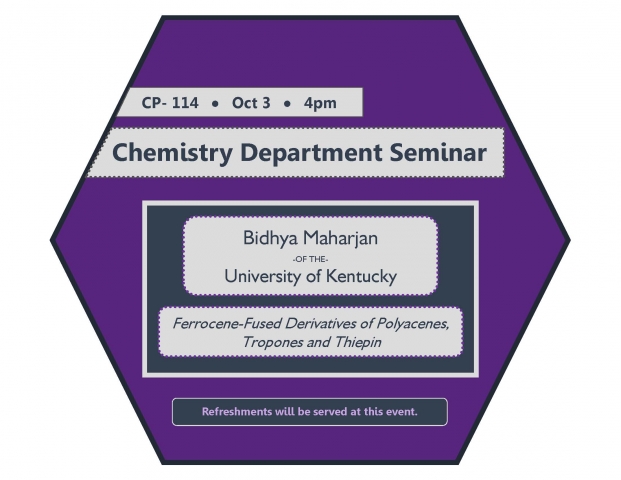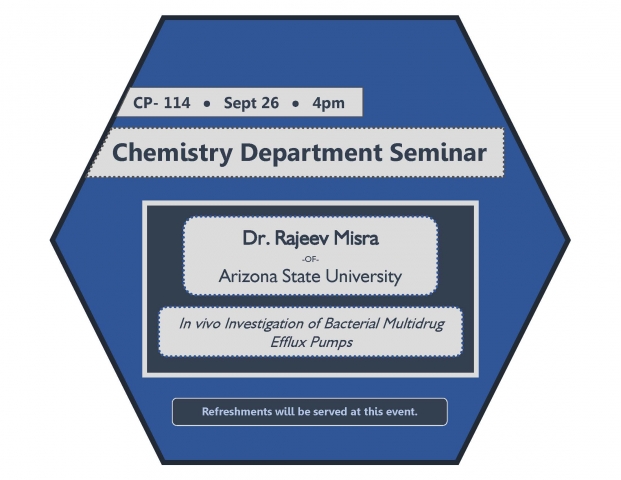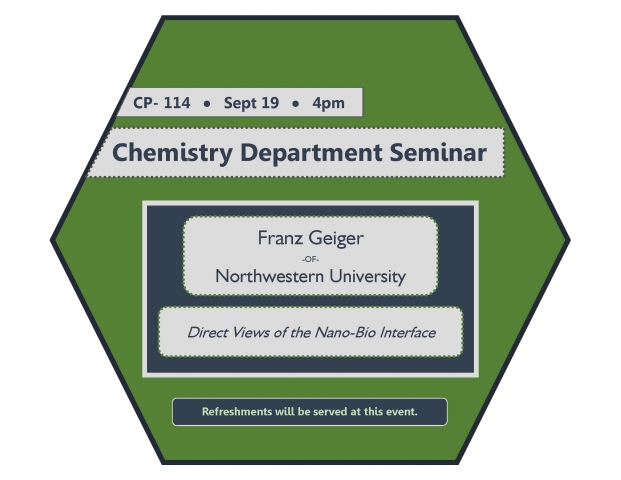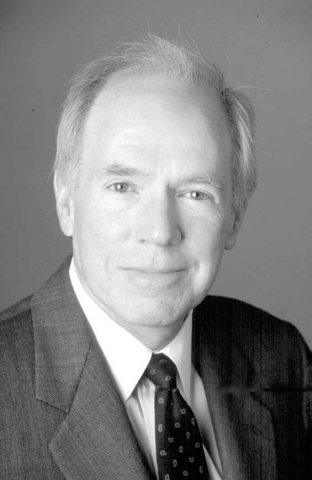Chemistry Department Seminar
----------
Bidhya Maharjan of the University of Kentucky will be presenting a seminar titled Ferrocene-Fused Derivatives of Polyacenes, Tropones and Thiepin.
Faculty Advisor: Dr. John Selegue

----------
Bidhya Maharjan of the University of Kentucky will be presenting a seminar titled Ferrocene-Fused Derivatives of Polyacenes, Tropones and Thiepin.
Faculty Advisor: Dr. John Selegue

----------
Dr. Rajeev Misra of Arizona State University will be presenting a seminar titled In vivo Investigation of Bacterial Multidrug Efflux Pumps.
Abstract: Multidrug resistance among human bacterial pathogens remains a grave social concern. A common cellular mechanism bacteria frequently employ is the efflux of antibiotics from the cell; resistance develops when the rate of drug efflux across the membrane exceeds that of drug influx. One of the most extensively studied multidrug efflux systems of the Resistance-Nodulation-Division (RND) family comprises of the AcrA, AcrB and TolC proteins of Escherichia coli. Fine structural analyses have provided deeper understanding of how drugs are captured and pushed through the AcrB pump protein. However, much remains to be learned as to how the tripartite pump assembles to extrude drugs from AcrB to outside the cell. I will discuss our efforts to gain a better understanding of the AcrAB-TolC pump assembly in vivo.
Due to their high clinical relevance, inhibitors have been sought to reduce or abolish the activity of multidrug resistant efflux pumps. Phenylalanine arginine β-naphthylamide (PAβN) was one of the first lead compounds that showed a potent inhibitory activity against a number of RND pumps, including AcrB. However, the conclusion that PAβN acts principally as an efflux pump inhibitor was questioned by several recent publications. We have attempted to resolve this controversy by employing strains constitutively expressing AcrAB or a homologous AcrEF efflux pumps. The employment of a modified real-time efflux assay allowed for the first time a clear distinction between the efflux pump-inhibiting activity of PAβN and membrane-permeabilizing action of polymyxin B nonapeptide (PMBN). It was determined that at low concentrations, PAβN acts mainly as an inhibitor of the AcrAB and AcrEF efflux pumps. However, at high concentrations, PAβN in the efflux-proficient background not only inhibited the efflux pump activity but also destabilized the membrane. The effects of PAβN on membrane integrity are compounded in cells unable to extrude PAβN.
Refreshments will be served at this event.
Faculty Host: Dr. Yinan Wei

----------
The seminar has moved to CP-220.
Dr. Franz Geiger of Northwestern University will be presenting a seminar titled Direct Views of the Nano-Bio Interface.
Abstract: The tendency of proteins, lipids, and other biological species to form coronas around nanoparticles has been put to great use for promoting or inhibiting cellular uptake of engineered nanomaterials. This situation raises the question whether lipid coronas can form spontaneously at the interfacial region between a nanomaterial and a biological membrane, i.e. the nano nano-bio interface, and thereby regulate cellular uptake. Here, we describe the interaction of a well-characterized set of ligand-coated nanoparticles with lipid bilayers of varying chemical composition, the gram-negative bacterium Shewanella oneidensis, and a multicellular organism, the water flea Daphnia magna. Using nanoparticle- and membrane-specific data from microscopy, spectroscopy, and mass measurements, we determine that particles coated with cationic polyelectrolytes disrupt largely zwitterionic bilayers under electrostatically attractive conditions while all other particle-ligand combinations surveyed leave the bilayers intact. Moreover, we report that bilayer disruption coincides with lipid corona formation around the particles and propose this mechanism as the molecular basis for a nanoparticle-specific effect that lowers the survival rate of D. magna when they are exposed to particles wrapped in cationic polyelectrolyte. Finally, we demonstrate the key role of lipopolysaccharides in protecting S. oneidensis from nanoparticle uptake.
Refreshments will be served at this event.
Faculty Host: Dr. Marcelo Guzman

College is always a growing experience, and for UK graduate William Snyder, it was a particularly memorable one. 60 years after his graduation, he still recalls his time at the University of Kentucky fondly. He recounts how his time at UK led to his admission to Vanderbilt and how he came to be interested in opthalmology, and concludes with some advice to the students of today.
This podcast was produced by Patrick O'Dowd.
Being a female anthropologist in the 60's was no bed of roses. Martha Ann Rolingson, who graduated from the University of Kentucky, recounts the differences she saw over time while working in the field. She touches on her story of how she arrived at UK, how the role of women in science has changed over time, and gives some advice for current students.
This podcast was produced by David Cole.
Our Sun is amazingly stable in its energy output and has been for several billion years. There are other stars which do not remain stable and actually pulsate with a well-defined period. I will discuss two types of pulsating stars, the Cepheid and RR Lyrae variables. Brighter variables can be easily observed with small telescopes making them interesting objects for professional and amateur observers. Understanding of the pulsations allows astronomers to determine aspects of how stars evolve. As they beckon in the night, they allow accurate distance determinations of galaxies that are very far away.
The University of Kentucky Department of Physics and Astronomy is pleased to welcome the public to our astronomical observatory. Part of our program of public outreach is a presentation on an interesting topic in astronomy followed by a visit to the observatory. The Kentucky SkyTalk is held on the second Thursday of every month. A 45 minute program on astronomy will begin at 8:00 PM in Room 220 of the Chemistry-Physics Building. After the presentation, you are invited to view the sky through our 20-inch telescope, weather permitting.
Free parking is available on the top floor of parking structure #2, next to the observatory. With the exception of paid parking, without a valid parking permit, leaving your vehicle somewhere other than next to the observatory will result in a parking citation.
All are welcome and there is no charge. Tell your neighbors. Bring your kids.
A flyer in pdf format and a link to a campus map are available here: https://pa.as.uky.edu/observatory
QIPSR is hosting a 2-Day intensive workshop on simultaneous equation modeling taught by Dr. Sandra Marquart-Pyatt (Sociology, Michigan State University). Dr. Marquart-Pyatt has offered similar hands on classes at MSU and has taught her course at the University of Michigan's ICPSR Summer Program for 8 years running. The workshop will be May 14-15th.
On Wednesday, May 14 Dr. Marquart-Pyatt will present the theoretical basis of simultaneous equation modeling in the President's Room of the Singletary Center. On Thursday, May 15 Dr. Marquart-Pyatt will then present more technical details along with practical demonstrations using Stata on the 6th Floor of the College of Nursing.
Visit the QIPSR website for more information and to register.
Biography:
Dr. Robert A. Stokes is an alumnus of our department, having received his B.S. He went on to Princeton and received a M.A. and a Ph.D. in Physics. During that time he was involved in the early experiments which detected the Cosmic Microwave background.
He recently retired from his position as President as President and CEO of Versa Power Systems, Inc. a joint venture of GTI, EPRI, Fuel Cell Energy, Inc. and the University of Utah. Under his leadership, FCE and Versa were awarded a $139 Million contract by the USDOE as part of the Solid State Energy Conversion Alliance (SECA). More recently Versa Power partnered with the Boeing Company on a DARPA project to develop a revolutionary SOFC electricity storage unit that enables the Vulture solar powered aircraft to complete multi-year high altitude missions without refueling. On December 20, 2012 FuelCell Energy, Inc. acquired all of Versa Power’s capital stock.
Before leading Versa Power Dr. Stokes was Senior Vice President of the Gas Technology Institute of Chicago. From 1988-1995, he was Deputy Director of the National Renewable Energy Laboratory (NREL), and was responsible for major research programs in partnership with the U.S. Department of Energy (DOE) and private industry to speed the commercial adoption of breakthrough technologies. From 1990-1995, he was also a vice president of the Midwest Research Institute, the operating contractor for NREL.
Prior to his work at NREL, Dr. Stokes was Director of the Applied Physics Center at Battelle, Pacific Northwest laboratories where he directed the activities of a staff of 300 engineers and scientists engaged in energy and technology related R&D. Before joining Battelle, he was an associate professor of physics at the University of Kentucky.
